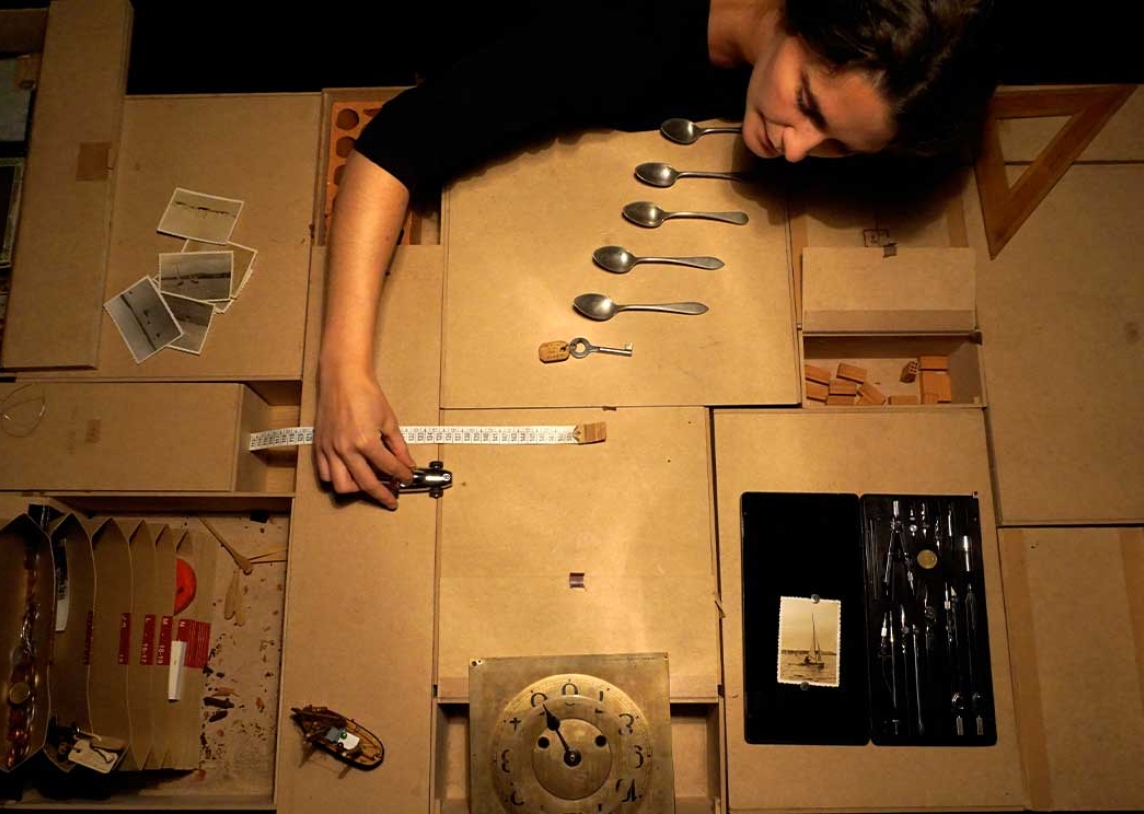News
MAR
M.A.R.
Andrea Díaz Reboredo (Spain)
Creation and cast: Andrea Díaz Reboredo
Advice: Xavier Bobés Solá
Objects: Andrea&Pablo Reboredo(s)
Music: Dani Leon
Simultaneous interpretation from Spanish: Klara Kastelec
By NAtalia GiorgaM.A.R. is an interactive performance of object theatre that narrates the story of a family through eight decades and five generations. Andrea Diaz Reboredo performs a gentle choreography accompanied with spoken words that alter, rethink and modify the space around her. The minimalist set is made of a big desk with an intricate yet ordered infrastructure of wooden boxes of different sizes and shapes that reveal everyday objects such as a clock and framed pictures, a miniature tree, a miniature staircase, a plate with a fine soil. It is a functional and elegant set design that fulfills its audiovisual storytelling purpose, however in logistic terms some of the objects in the boxes can be difficult to see, especially for audience members sitting in the last rows, despite the best effort from the artist to incorporate movements in the choreography in order to display the objects to the entire audience. An industrial pendant light casts a warm halo in the dark room contributing to the creation of a sombre yet peaceful atmosphere.
Everything revolves around the dot, el punto, the origin of all things, it can extend into a line that either separates like a border, or unites like a path. Architecture is at the centre of this performance, not only as the minimal set design resembles a simplified city model, but also as one of the main characters, Andreas, is an architect.
The story begins in 1902, through the years the house and surrounding areas change and evolve, much like the family living in it. We travel through time, through the ‘50s and ‘80s, exploring how time affects both the house and family ties. Throughout the performance the artist interrogates and interacts with the audience, even offering a galleta, cookie, to a young girl in the front row, whose flavour is decided by another audience member, the artist reassures the young girl that even though the story is currently taking place in the ‘50s, the cookie is fresh. This is only one example of the artist’s quick wit and friendliness. Random audience members are assigned different characters, so far represented by chess figurines, and are encouraged to decide what house they want: flat, semi-detached, detached, big, small (with a surprise at the end of the show). The table is cleared as various house models are placed on a separate table at the back.
This poetic, humorous and graceful performance addresses heavy themes such as divisive urban planning, family bonds and the passing of time with lightness, yet without underestimating their importance, in fact by tracing invisible lines and dots that connect people and places that expand and mutate through different dimensions. At last, the surprise inside the tiny house previously selected by a member of the audience, is revealed: it’s a little model of a theatrical stage with its classic red curtains, a sign beneath it reads that their childhood was enriched by the curtains at their grandparents’ house as they would turn every room into a theatre stage.

